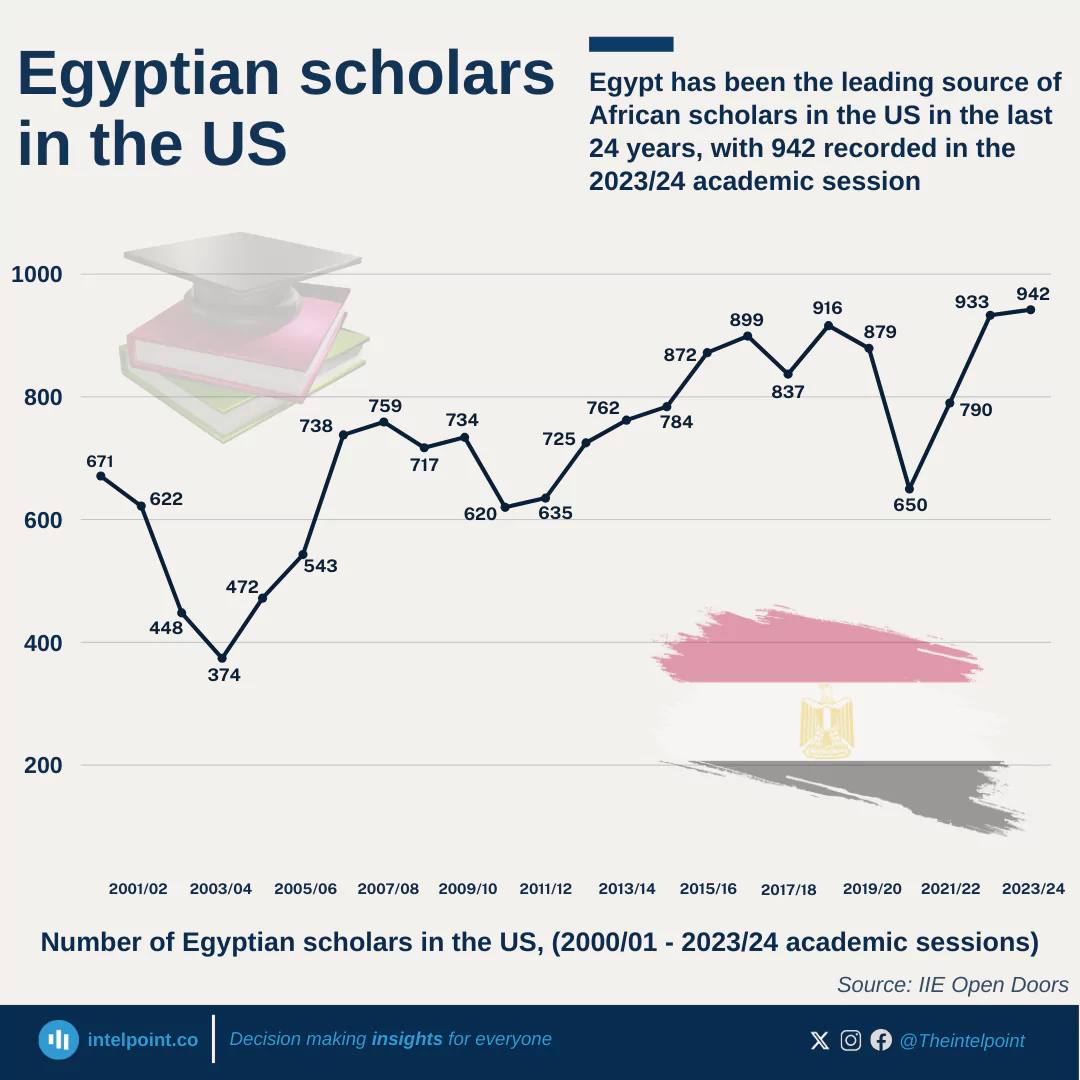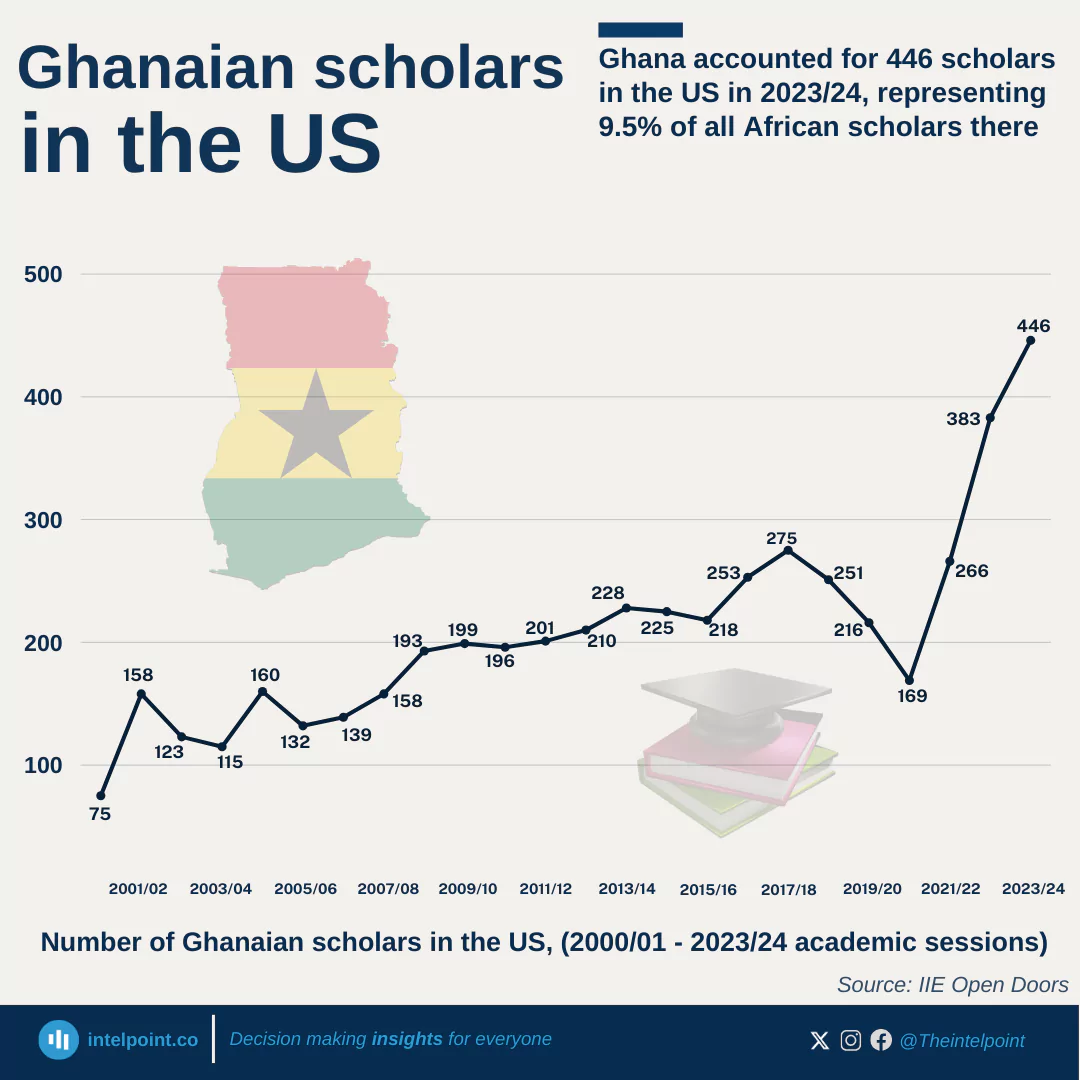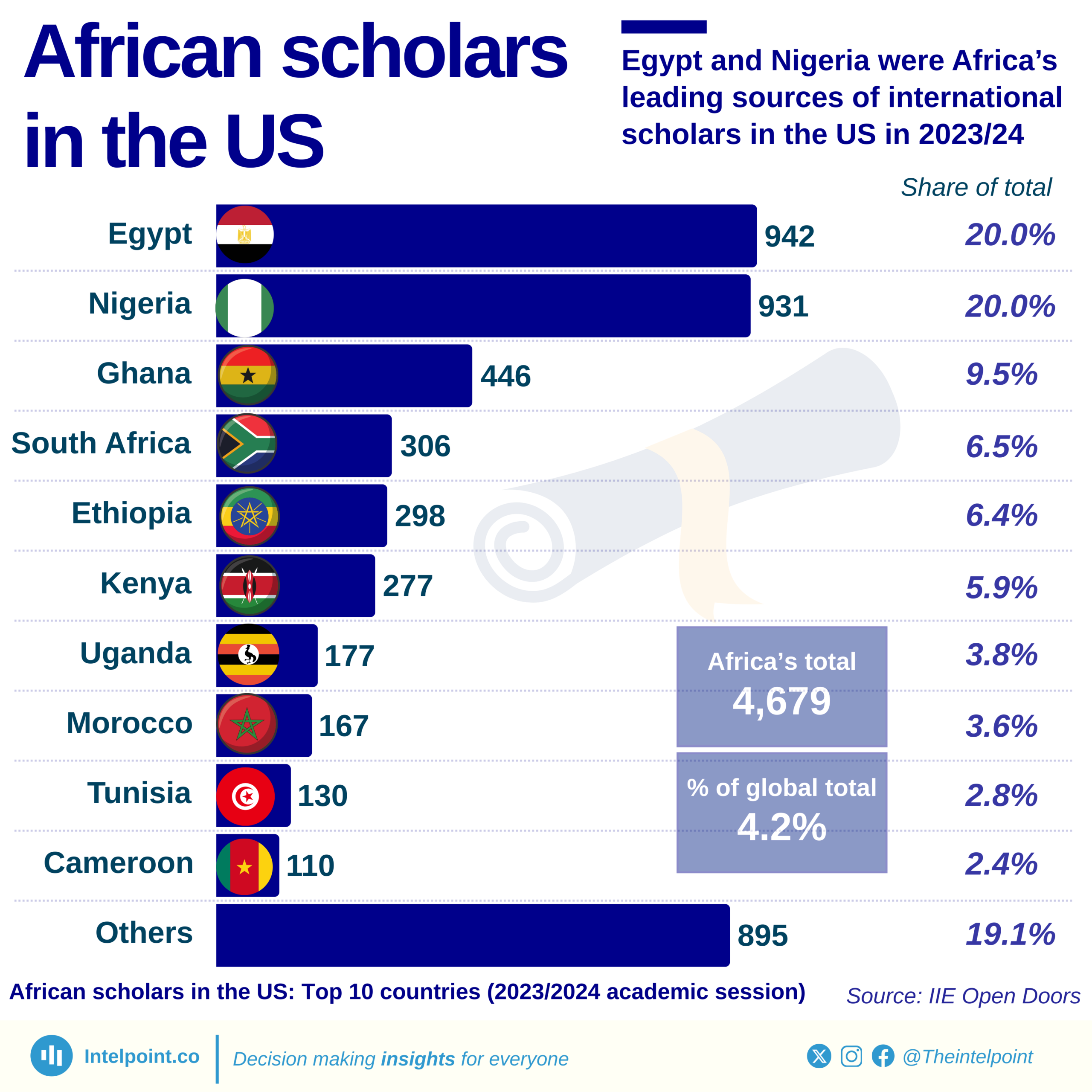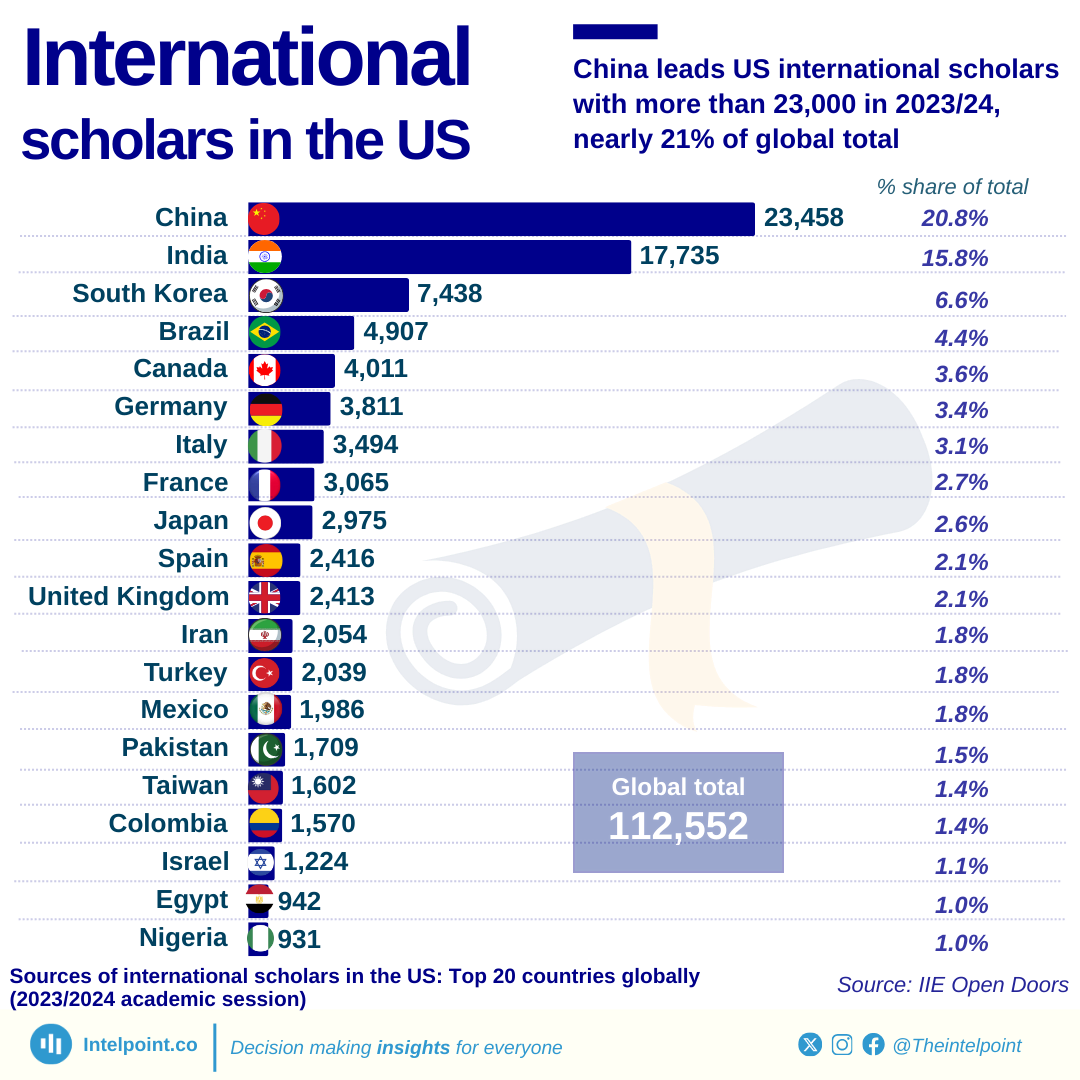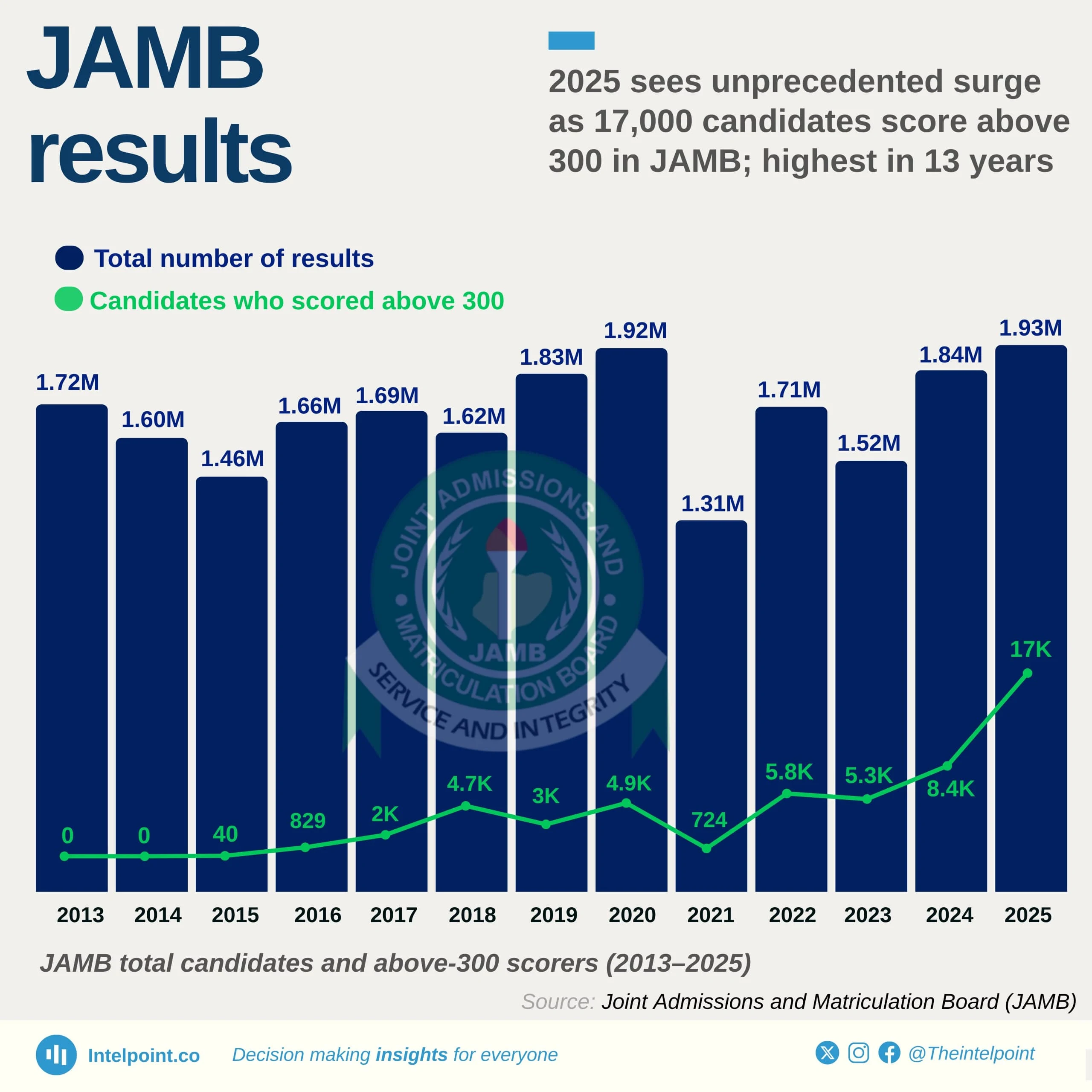Over the past two decades, more African students have been enrolling in higher education institutions within the United States at an extremely high rate. In the 2023/2024 academic year, more than 56,780 students from Africa were enrolled in U.S. institutions—a number significantly higher than in previous years. This upward trend is catalyzed by factors such as economic growth in African countries, increased access to scholarships, and growing recognition of the value of US-based education.
Here’s a detailed table summarizing the trends of the top African countries by number of citizens studying in the US from 2000-2024:
| Period | Top countries by number of students | Key trends |
| 2000-2010 | Nigeria, Kenya, and Ghana | There was a gradual increase in African students pursuing higher education in the United States. |
| 2010-2015 | Nigeria, Kenya, and Ghana | Stronger bilateral relationships, active recruitment by U.S. universities, and perceived quality of U.S. higher education played major determining roles. |
| 2015-2020 | Nigeria, Ethiopia, and South Africa | The number of African students reached a new high and diversified in origin. The improvements were largely motivated by increased scholarships available, political stability in some parts, and also the global acknowledgment of U.S. degrees. |
| 2021-2024 | Nigeria, Ghana, and Kenya | Resilient aspirations to get educated, and increased adoption of remote learning, combined with the scholarships issued, have sustained mobilities in student exchange during that time. |
African students in the United States increased by 80%, from approximately 20,000 in 2000 to 36,000 in 2010. Nigeria was consistently the top country, with 7,000 students in 2000 and 13,000 by 2010.
Ghana and Kenya also had notable increases, with Ghana moving from 2,000 to 4,000 and Kenya from 1,500 to 3,000. This period was characterized by a steady upward trend in African student enrollment.
Between 2011 and 2015, the number of African students in the U.S. continued to increase, reaching about 45,000 by 2015. Nigeria continued to lead the list with 15,000 students, while Ghana and Kenya continued to grow with 5,000 and 4,000 students, respectively.
Despite the global economic challenges, this period saw a 25% growth in African student enrollment in the United States.
From 2016 to 2020, the number of African students enrolled in the U.S. surged to over 55,000, representing a 22% increase from the previous period. Nigerian enrollment reached 18,000, while Ghana and Kenya enrolled 6,000 and 5,000, respectively. This period was marked by accelerated growth and diversification in the countries of origin.
From 2021 to 2024, African student enrollment in the U.S. remained strong, with numbers leveling off around 56,000. Nigeria was the leading country with 20,000 students, followed by Ghana and Kenya, with about 9,000 and 4,000 students, respectively. This period showed resilience in African student enrollment despite global challenges.
From 2000 to 2024, the enrollment in U.S. higher education institutions for African students continued to rise. In 2000, about 20,000 African students were enrolled. The leading enrollments came from Nigeria, Ghana, and Kenya. This would increase by about 80%, to about 36,000, by 2010. The succeeding decades further developed this growth and increased it past 56,000 students enrolled by 2024. In this respect, U.S. education demonstrates growing importance across African nations.
